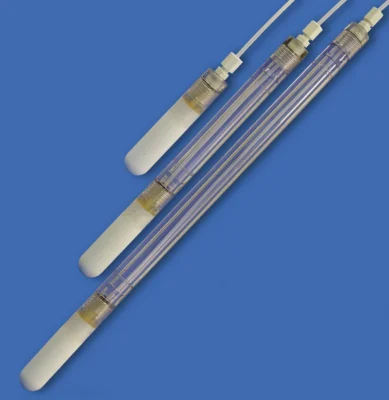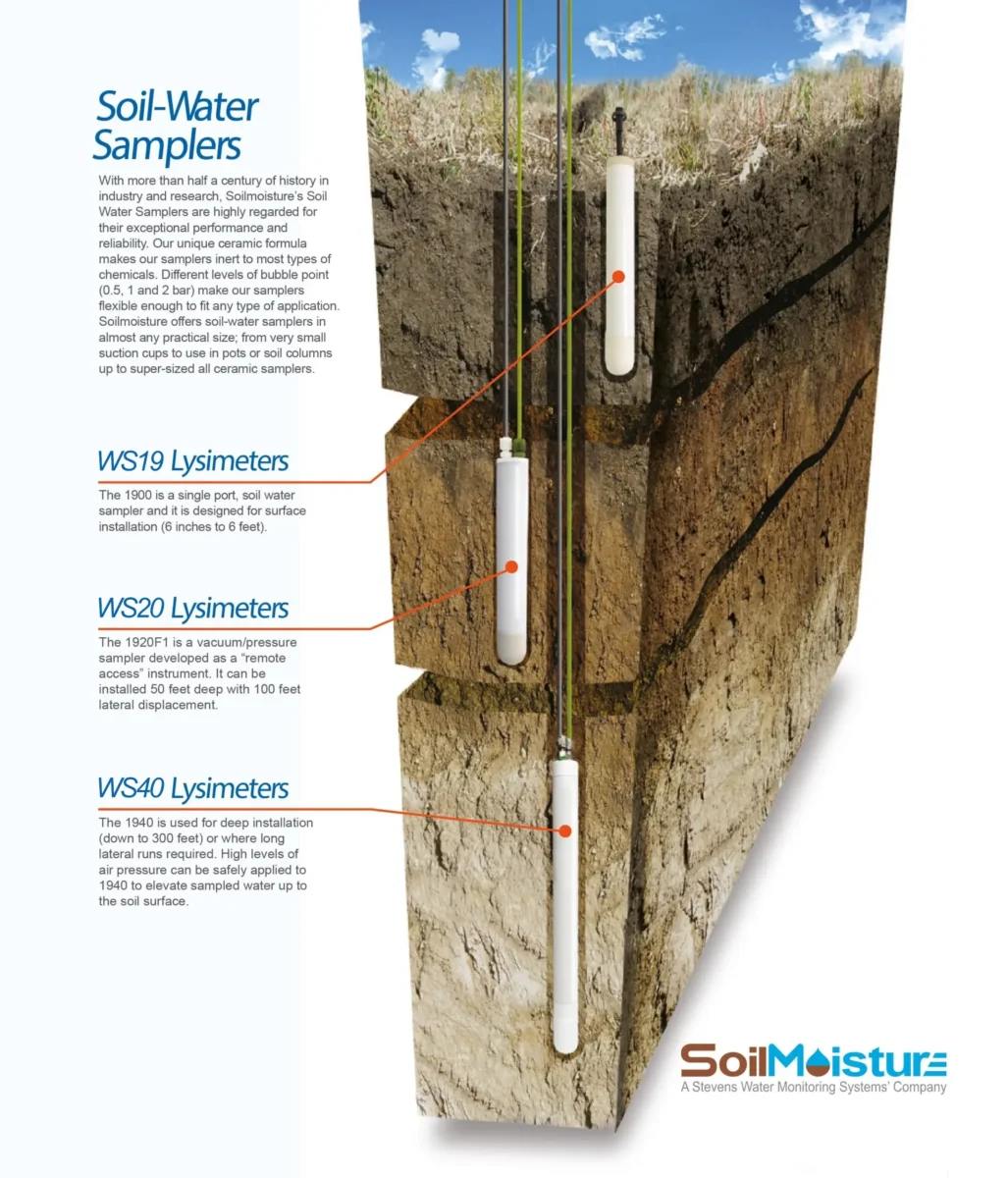Soil Water Samplers

Soil Water Samplers are designed to collect soil water extracted from the soil for onsite or laboratory water quality analysis.
How they work
A negative pressure is applied to the tube using a hand pump. Water enters the sampler through the porous ceramic. Measurements are taken on the extracted water samples. The rate of water accumulation depends on the soil type and moisture content.
Purpose
Soil water samplers are essential tools for sustainable land and water resource management, and in understanding the interaction with nutrients and contaminates.
Slim Water Samplers
| Tube Length | 3/8" Diameter | 1/4" Diameter | 7/8" Diameter |
|---|---|---|---|
| 6 | ----------- | WS14L6 | ----------- |
| 12 | WS10L12 | WS14L12 | WS9L12 |
| 18 | ----------- | WS14L18 | WS9L18 |
| 24 | WS10L24 | ----------- | WS9L24 |
| 36 | WS10L36 | ----------- | WS9L36 |
Field Water Samplers
| Part Number | Maximum Depth | Capacity | Ports |
|---|---|---|---|
| WS19L12 | 12" | 0.5 L | 1 |
| WS19L24 | 24" | 1.0 L | 1 |
| WS22 | 24" | 80 ML | 2 |
| WS20 | 15M | 1.0 L | 2 |
| WS40 | 100M | 2 |
Request a Quote
Need more information? We’re here to help!
Tell us a bit about yourself and your question and we’ll get back to you ASAP.
Applications
Soil Water Samplers have various applications in agriculture, environmental science, hydrology, mining, and other fields. Here are some of their primary hydrology applications:
Surface Water Interaction: the interaction between soil water and surface water bodies contributing to the management of water quality in rivers, lakes, and reservoirs.
Wetland monitoring: measure the water table level and its fluctuations levels, as well as contaminants and nutrient levels are essential tools for understanding and managing the complex dynamics of wetland hydrology and ecosystems.
Groundwater Protection: monitoring the quality of water percolating through the soil provides early warning of potential groundwater contamination.
Water Balance Studies: measuring the input, storage, and output of water in the soil contributing to the understanding of the hydrological cycle.
Recharge and Infiltration Rates: The rate at which water infiltrates the soil and recharges groundwater is essential for sustainable water resource management.
Soil-Atmosphere Interaction: The interaction between soil moisture and atmospheric conditions is crucial for understanding climate change impacts on water cycles.
Carbon Sequestration: Soil water content influences the decomposition of organic matter and carbon sequestration in soils. Samplers help in studying these processes and their contribution to climate change mitigation.
Soil Properties: Soil water samplers aid in investigating various soil properties, such as porosity, permeability, and water retention capacity, which are important for soil classification and land use planning.
Soil Health: They provide data on soil moisture and nutrient dynamics, helping in assessing soil health and fertility over time.

Downloads
Download Stevens’
Product Catalog

